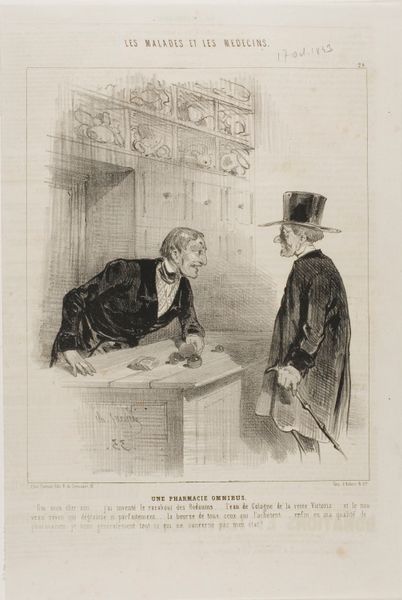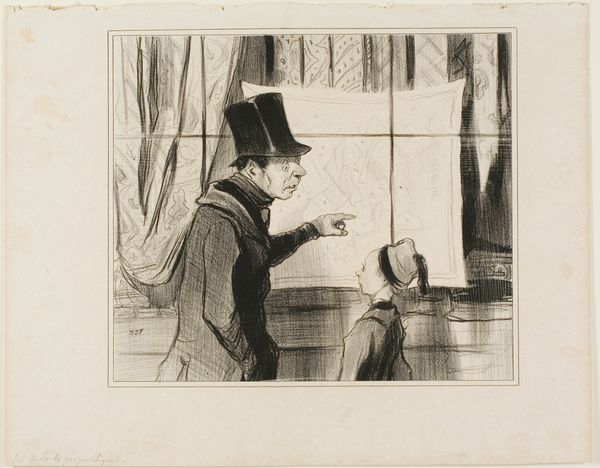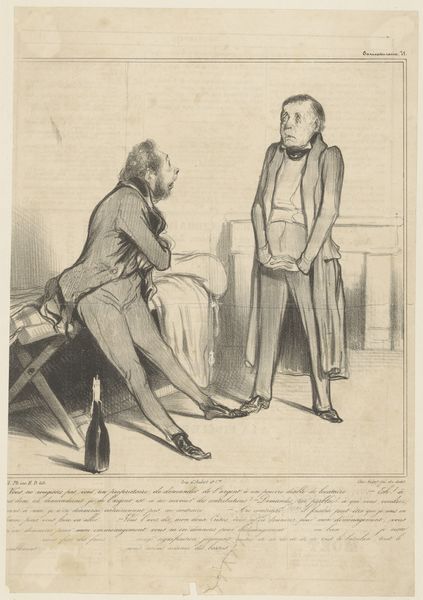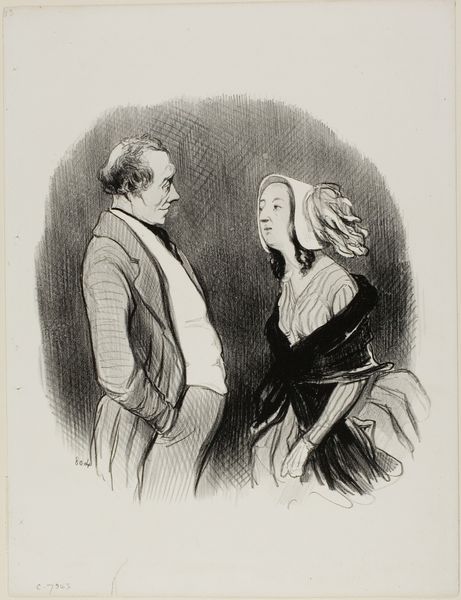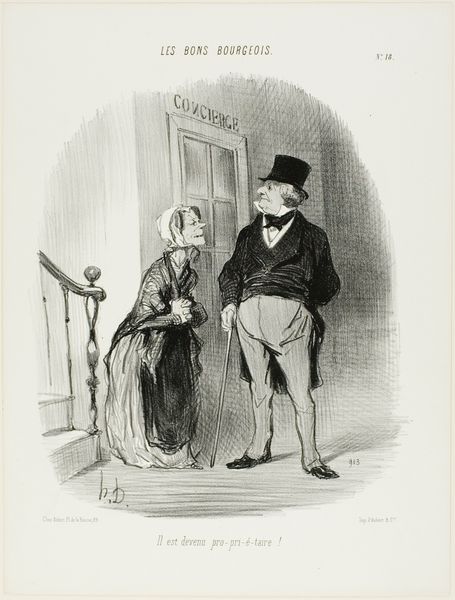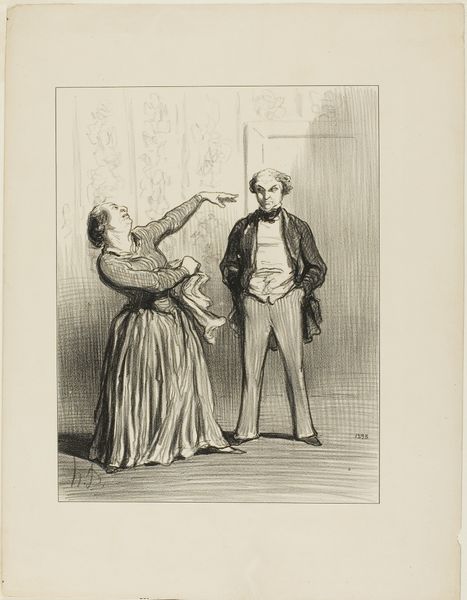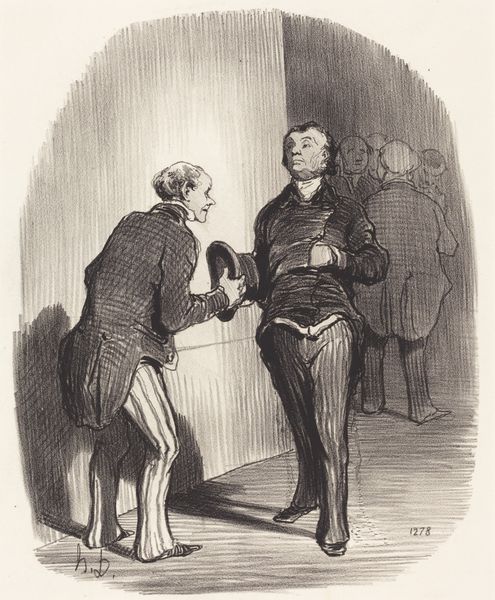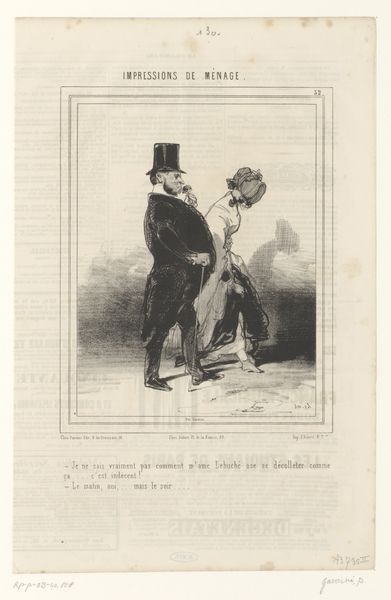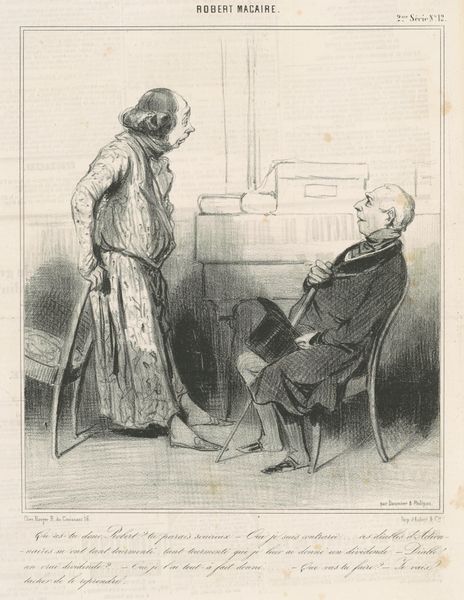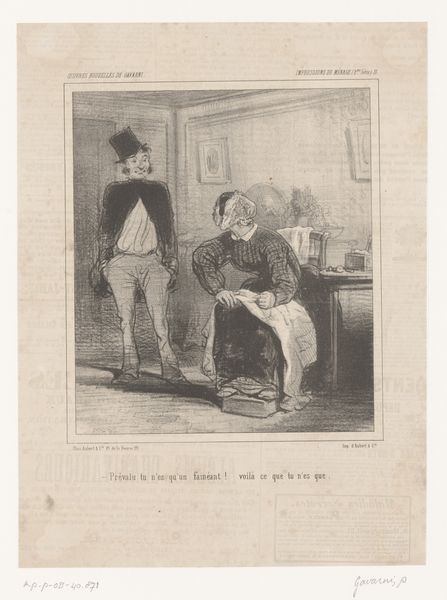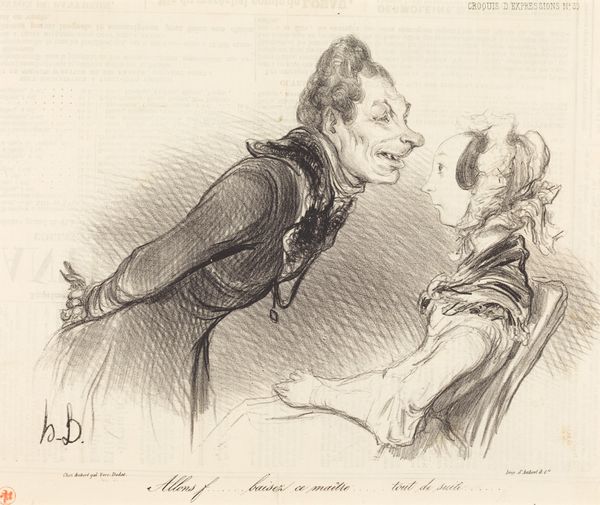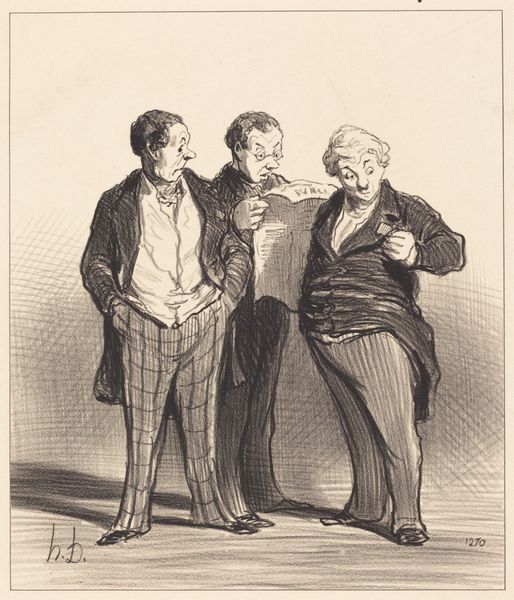
“- As you can see, Monsieur, I have enforced in my school perfectly good discipline. You cannot imagine to what extent I succeeded implanting in these young scholars a deep sentiment of respect towards their teacher,” plate 23 from Professeurs Et Moutards 1846
0:00
0:00
drawing, lithograph, print, paper
#
portrait
#
drawing
#
lithograph
# print
#
caricature
#
caricature
#
paper
#
romanticism
#
france
#
portrait drawing
#
genre-painting
#
history-painting
Dimensions: 196 × 255 mm (image); 262 × 341 mm (sheet)
Copyright: Public Domain
Curator: Honoré Daumier’s lithograph from 1846, titled “- As you can see, Monsieur, I have enforced in my school perfectly good discipline. You cannot imagine to what extent I succeeded implanting in these young scholars a deep sentiment of respect towards their teacher,” is currently held at The Art Institute of Chicago. Editor: My first impression is a wave of suppressed anxiety and biting social commentary rendered through stark contrast. It really gets under your skin. Curator: The work is part of his “Professeurs Et Moutards” series, showcasing scenes of teachers and students, a familiar subject within French visual culture, ripe for caricature and commentary. Daumier’s imagery is sharp and evocative, and you can see how readily his social criticism struck a chord then—and continues to resonate today. Editor: Absolutely. And as a lithograph on paper, it's inherently reproducible, aimed at widespread distribution. That raises interesting questions about consumption and the dissemination of critical viewpoints in mid-19th-century France. Consider the materials—the labor of stone carving, printing—all feeding into a burgeoning visual marketplace. Curator: Notice the central figure: the proud schoolmaster, seemingly oblivious to the chaos unfolding to his left where a student is actively being choked by another! The puffed-up chest, the self-satisfied gaze—Daumier skewers the archetype of the pompous authority figure, divorced from reality. Editor: It's not just the characters, it’s the way the lines delineate them. Daumier harnesses lithography’s capabilities—its textures, its capacities for capturing shadow—to amplify this critical assessment. He exposes not only individual follies, but also the broader failings within institutions like schools. The children become mere cogs in the machinery of discipline. Curator: Indeed. The scene plays into familiar anxieties around social hierarchy and education. I see the historical memory encoded into these repeating compositions as visual symbols. In what ways is that memory reconfigured each time the print is displayed? How does our contemporary vantage point color it further? Editor: Well, examining it today makes me consider access. Was it originally made for widespread viewership? If not, this museum represents a distinct setting from its original production. By transforming the mode of consumption from commodity to displayed artifact, what does that then convey? Curator: Very insightful. What remains palpable is Daumier’s critical assessment. Through this particular imagery he continues to expose those tensions even now. Editor: It certainly underscores how visual culture, right down to the print’s materiality, plays an active role in shaping the discourse about authority, discipline, and education.
Comments
No comments
Be the first to comment and join the conversation on the ultimate creative platform.

